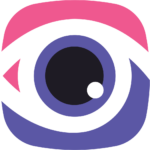Not everything you hear about dry eyes is true. Common myths can mislead you and prevent you from finding dry eye relief. This article separates fact from fiction, uncovering what really works for managing dry eyes. Learn the truth about treatments, lifestyle changes, and innovative solutions for effective eye care.
Dry eyes are a common condition, but the abundance of advice out there can make it hard to know what really works. Are eye drops the ultimate solution? Should you avoid screens altogether? This article debunks some of the most common myths about dry eyes and provides practical solutions grounded in science and expert recommendations. By understanding the truth, you can take the right steps toward lasting relief.
Myth 1: Eye Drops Are the Only Solution
While over-the-counter eye drops can offer temporary relief, they’re not always the best long-term solution. Relying solely on them may not address the root cause of your dry eyes.
- Fact: Eye exercises, hydration, and addressing environmental triggers can provide more sustainable relief.
- Solution: Complement eye drops with lifestyle adjustments and simple daily practices for a more comprehensive approach to managing dry eyes.
Myth 2: Dry Eyes Only Happen to Older People
Common dry eye myths goes that the problem is age-related. However, younger people, especially those who spend hours on digital screens, are increasingly affected.
- Fact: Factors like screen time, poor diet, and even certain medications can lead to dry eyes at any age.
- Solution: Preventative measures like the 20-20-20 rule (look away every 20 minutes for 20 seconds at something 20 feet away) can help.
Myths vs. Facts About Dry Eyes
| Myth | Fact |
| Eye drops are the only solution | Holistic approaches work better |
| Only older people get dry eyes | People of all ages can experience dry eyes |
| Staring at screens damages your eyes | Proper breaks and positioning reduce strain |
Myth 3: Screen Time Causes Permanent Eye Damage
It’s easy to blame screens for dry eyes, but they don’t directly cause permanent damage. The real issue is the way we use them.
- Fact: Reduced blinking while staring at screens leads to dryness and fatigue.
- Solution: Use screen breaks, adjust your lighting, and blink more often to alleviate strain.
Pros and Cons of Popular Dry Eye Remedies
| Remedy | Pros | Cons |
| Over-the-counter drops | Instant relief for mild symptoms | Doesn’t address underlying issues |
| Warm compresses | Improves tear quality and soothes irritation | Time-consuming for daily use |
| Eye exercises | Long-term benefits for strain and dryness | Requires consistency for noticeable results |
| Digital tools (VisionUp) | Personalized plans for eye health improvement | May involve a learning curve for new users |
Alternative Solutions
For those looking to move beyond myths and embrace effective solutions, tools like VisionUp offer a game-changing approach. This mobile app provides a variety of guided exercises, inspired by methods like the Bates Method, to target dry eye symptoms at their root.
- Includes exercises like palming and blinking to promote natural tear production.
- Offers personalized training plans to suit individual needs.
- Tracks progress to help you stay consistent.
This is part of our series on comforting dry eyes. Don’t miss Eye Yoga for Dry Eyes: The Best Exercises for Soothing and Hydrating Your Eyes
Conclusion
Don’t let myths hold you back from finding the right relief for dry eyes. By understanding the facts and adopting proven techniques, you can improve your eye health and comfort. Whether it’s through simple exercises, lifestyle adjustments, or innovative tools, there’s a solution that fits your needs.
Recommended resource: Explore Dr. William H. Bates’ classic book, The Bates Method for Better Eyesight Without Glasses, for eye exercises and relaxation techniques.
